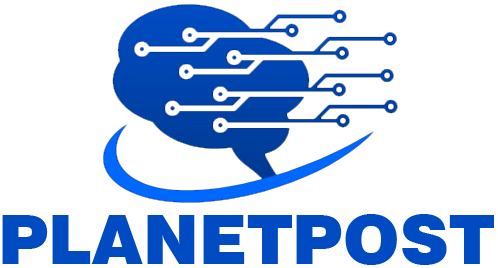Intel has announced that CEO Pat Gelsinger has retired, effective December 1, and stepped down from the company’s board of directors.
Intel execs David Zinsner and Michelle Johnston Holthaus have been named interim co-CEOs. Zinsner is Intel’s CFO, while Holthaus is GM of Intel’s client computing group.
Holthaus has also been appointed to the newly created position of CEO of Intel Products, a division spanning the chipmaker’s consumer-focused org as well as its data center, AI, network, and edge businesses.
Frank Yeary, independent chair of the board of Intel, will become interim executive chair during the transition period. Intel says that leadership at Intel Foundry, its chip design and manufacturing wing, will remain unchanged, and that the Intel board has formed a search committee to find a permanent successor to Gelsinger.
“Leading Intel has been the honor of my lifetime — this group of people is among the best and the brightest in the business, and I’m honored to call each and every one a colleague,” Gelsinger said in a statement. “Today is, of course, bittersweet as this company has been my life for the bulk of my working career. I can look back with pride at all that we have accomplished together. It has been a challenging year for all of us as we have made tough but necessary decisions to position Intel for the current market dynamics. I am forever grateful for the many colleagues around the world who I have worked with as part of the Intel family.”
According to Bloomberg, Intel’s board gave Gelsinger the option to retire or be removed.
Gelsinger first joined Intel as an 18-year-old after earning an associate’s degree from Lincoln Tech. He was the lead architect of Intel’s 4th generation 80486 processor, introduced in 1989. And at age 32, he was named the youngest VP in the company’s history.
Gelsinger became Intel’s CTO in 2001, leading key tech developments including Wi-Fi, USB, and the Intel Core and Xeon chip lines. In 2009, he left to join EMC as president and CFO, and was appointed CEO of VMware in 2012.
Gelsinger rejoined Intel as CEO in 2021 as the company faced increasing pressure from activist investors to reorganize. He launched an ambitious five-year course correction, greenlighting the construction of massive, multi-billion-dollar chip manufacturing plants in the U.S. and overseas in a bid to catch up to chip giants such as TSMC and Samsung.
Gelsinger also pushed Congress to subsidize stateside chip manufacturing. In November, the U.S. Commerce Department awarded Intel up to $7.86 billion through a funding bill, the CHIPS Act, to advance Intel’s commercial semiconductor efforts in Arizona, New Mexico, Ohio, and Oregon.
But Gelsinger often stumbled through his most recent tenure — and struggled to deliver on his promises.
Gelsinger reportedly offended TSMC by calling out Taiwan’s precarious relations with China, which led to Intel losing out on important discounts from the chip fabricator. He was overly optimistic about the ability of Intel’s AI chips, such as Gaudi, to compete against products from incumbents like Nvidia. And his initiatives to transform Intel into a chip manufacturer for other companies ran into technical problems.
By early 2022, Intel’s revenue from PC chips had dropped 25%, and the company had ceded valuable data center chip ground to rival AMD. That same year, a deal to supply chips to Waymo, Alphabet’s self-driving car division, fell through. Also that year, Intel lost out on another top potential client, Sony, for the next-gen PlayStation.
2023 brough Intel’s failed acquisition of Israeli company Tower Semiconductor for $5.4 billion. Regulatory hurdles killed the proposal, forcing Intel to cough up a $353 million termination fee.
Intel’s 18A manufacturing process for chips, meant to deliver a major new line of business for the company, became a liability after it failed to meet reliability expectations. Apple and Qualcomm reportedly passed on 18A, and Intel isn’t expected to begin producing chips with 18A in volume until 2026.
In early fall, Intel took steps to spin off its foundry business into an independent subsidiary — a move shareholders had long pushed for — as it announced new customer wins, including AWS (which plans to use Intel’s 18A process) and the Pentagon.
But it was a case of too little, too late.
Intel’s revenue shrunk to $54 billion in 2023, down around a third from the year Gelsinger took over. The company has slashed dividends, vowed to restructure and cut more than 15,000 jobs in a $10 billion cost-reduction plan, and paused or delayed construction on several chipmaking facilities.
In October, Intel posted a $16.6 billion quarterly loss — the biggest in its 56-year history. And analysts anticipate the company will lose $3.68 billion this year, its first annual net loss since 1986.
Intel continues to face challenges. Its latest consumer processors were met with a lukewarm reception, and entrepreneur Lip-Bu Tan stepped off the company’s board of directors, leaving Intel without directors with semiconductor expertise.
To turn things around, Intel is said to have considered selling its autonomous driving arm Mobileye and its enterprise networking division. Suitors including Qualcomm have reportedly approached the firm about a takeover offer.
Shares of Intel were up ~2.66% on news of Gelsinger’s departure.
“With Dave and MJ’s leadership, we will continue to act with urgency on our priorities: simplifying and strengthening our product portfolio and advancing our manufacturing and foundry capabilities while optimizing our operating expenses and capital,” Yeary said in a press release. “We are working to create a leaner, simpler, more agile Intel.”


